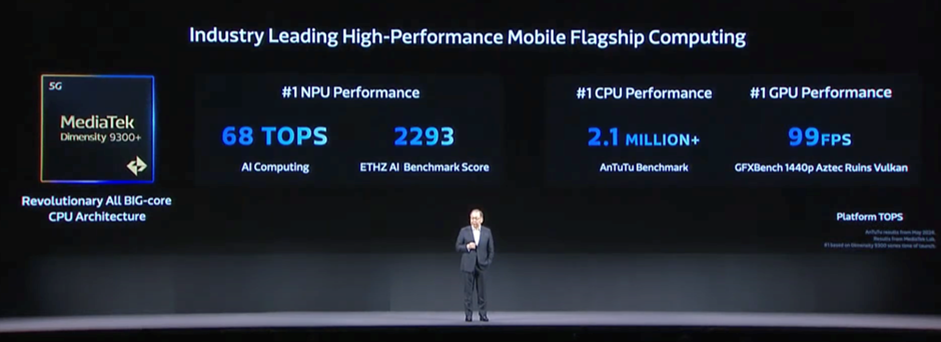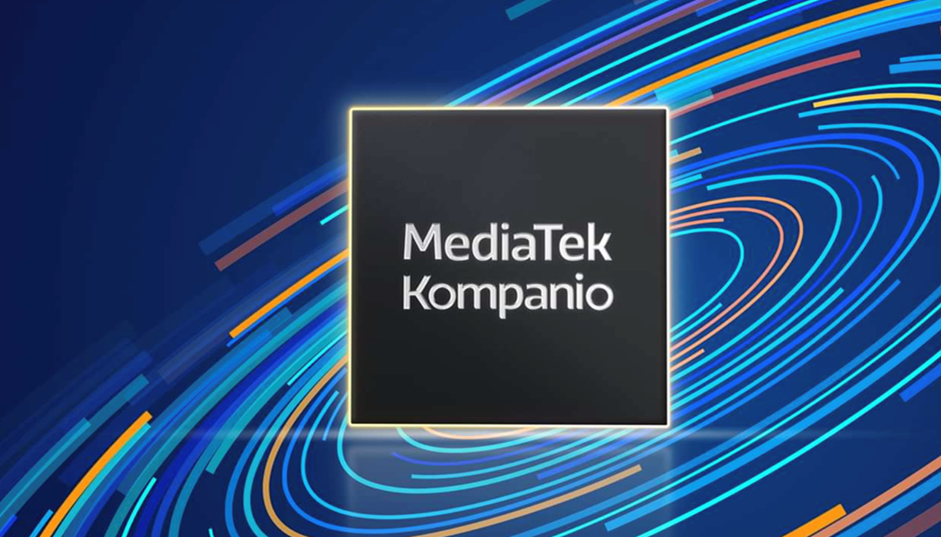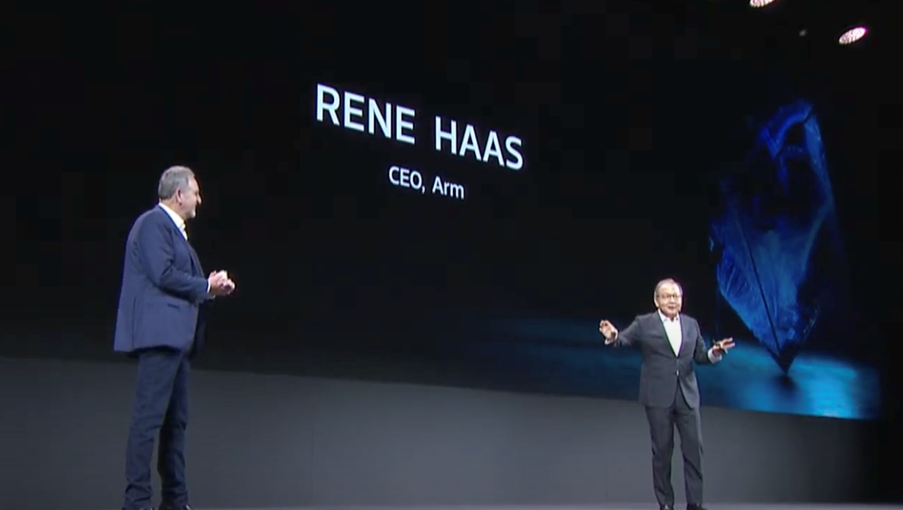MediaTek Kompanio 838 chipset is designed for Chromebooks, supporting DDR4 and LPDDR4X memory types, featuring the MediaTek NPU 650 and Imagiq 7-series ISP. The Pentonic 800 chipset is tailored for 4K displays, providing 50% faster AI processing, reduced bandwidth usage, upscaling, and variable refresh rates up to 4K2K 165 Hz.

What do we think? It wasn’t the most exciting of Computex announcements from MediaTek, and Android-based laptops are looking decidedly dull compared with the latest Arm and x86 devices. Presumably, they will be much cheaper. AI in these devices is focused today on enhanced performance of experiences like streaming rather than assistant/agent-like applications. Hopefully, MediaTek is working on something much more like Snapdragon X Elite in the background, and in the meantime, there is the all-big-core Dimensity 9400 coming later this year. The high point of the keynote? An appearance by Arm CEO Rene Haas, who was equally berated and lauded by MediaTek CEO Rick Tsai. Worth a watch to see these big-time CEOs go off script and hit a wall.
MediaTek launches Kompanio 838 for Chromebooks and Pentonic 800 for displays

At Computex 2024, MediaTek launched its Kompanio 838 chipset, which, like most of the big announcements at the show, is designed to balance performance and long battery life, but whereas competitors AMD, Intel, and Qualcomm are focused on Windows, MediaTek’s offering is for Chromebooks. This is despite rumors and our expectations ahead of the show that MediaTek would launch a Windows PC device combining Arm CPUs and Nvidia GPUs. We still believe such a device is in the works, with Nvidia TensorRT and CUDA RTX GPU with DLSS, raytracing, and VRS, but there was no sign of it in Taipei.
Kompanio 838 supports both DDR4 and LPDDR4X memory types, which will please some OEMs. Compared to previous generations, this new chipset doubles memory bandwidth for increased data throughput.
AI is handled by the MediaTek NPU 650, which MediaTek says is specifically tailored for efficient image data processing and executing complex computations.
It also includes the MediaTek Imagiq 7-series ISP, which has HDR, dual-camera support, and low-light capture capabilities.
There is hardware-accelerated AV1 video decoding for streaming 4K content but no VVC—for that you need the new Pentonic 800 chip. The chipset supports up to two 4K displays simultaneously.
MediaTek’s Filogic Wi-Fi 6 and 6E technology provides dual-band and tri-band connectivity options with speeds of up to 1.9 Gbps and enhanced security with WPA3 support.
There are several OEMs using the device, most notably Lenovo, which made it clear they see this as an educational device rather than for mainstream consumers. “The need for energy-efficient devices capable of multitasking continues to grow, and we are committed to empowering students and teachers with tech devices and solutions that enhance learning in the classroom and beyond,” said Benny Zhang, executive director and general manager of Chromebooks in Lenovo’s Global Innovation Center, Intelligent Devices Group.
MediaTek also announced the Pentonic 800 for 4K displays, including smart TVs, smart monitors, commercial displays, and embedded large displays. MediaTek says that compared to the previous-generation chip, this AI processor offers 50% faster AI processing performance and reduces up to 60% bandwidth usage. The NPU supports upscaling, enhances picture quality, and eliminates noise, as well as enhancements for streaming and gaming. Pentonic 800 supports variable refresh rate (VRR) up to 4K2K 165 Hz. The hardware video decoding engine supports key codecs such as HEVC, AV1, AVS3 High Profile, and VVC (H.266). The chip also supports MEMC, TCON, and high-resolution audio.
In a keynote at Computex, MediaTek’s Vice Chairman and CEO Rick Tsai said, “We, MediaTek, want to be a major player in enabling this ubiquitous AI. We firmly believe computing should cover everywhere from the edge to the car. What we want to do is to participate, to enable, in all these platforms.”
It was not immediately obvious how that would be the case, though the upcoming Dimensity 9400 will launch in “about three months,” according to Tsai, and is apparently on TSMC’s second-generation 3nm N3E node, which should enable very low power. Dimensity 9400 will retain the all-big-core approach with a Cortex-X5 performance core at 3.4 GHz or beyond, joined by 3× Cortex-X4 cores and 4× Cortex-A720 cores. The Dimensity 9400 NPU is said to have nearly 50% faster generation for large language m(LLM) and 15% faster image generation. That combo might beat Snapdragon 8 Gen 4.
It’s the right ambition, but the products are not yet there to back it up, and some of MediaTek’s messaging was divergent from competitors, with an emphasis on cloud and seamless connectivity, while others are pushing local LLM and data sovereignty.
Tsai was joined onstage by Arm CEO Rene Haas to discuss MediaTek’s commitment to Arm Neoverse for edge to cloud solutions. “We designed the chip together,” said Haas, suggesting Arm capabilities that we expect them to message strongly this year.

There was no mention of sometime MediaTek supplier Imagination Technologies, which continues to ship older MediaTek parts (Helio G25 and G35) but seems to have not won any new sockets with MediaTek in the last couple of years.